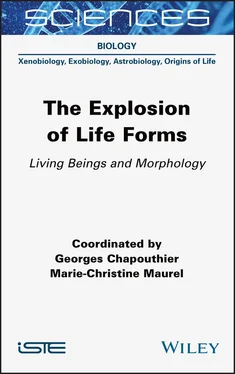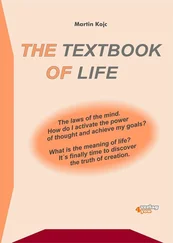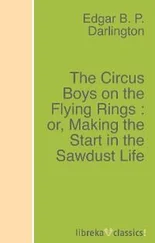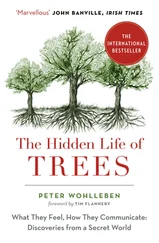2.1. Observations and assumptions
Maybe asking about life’s “essence” is, however, already the wrong question. In traditional philosophical terms, asking about the essence of something aims at finding out its “formal cause”, a concept not in use in modern science. It only eventually plays a role when it comes to the idea of “information”. For Aristotle’s philosophy, every life even has some sort of soul , which also involves another, final cause or purpose for an object in the world (Bedau and Cleland 2010, p. 4). Although this is distinct from the widespread bodiless concept of soul advocated by René Descartes, the whole idea behind it does not fit into modern science anymore. When we ask about the nature of something, like in this very short essay, we want to know of the substance of something, not its purpose, which for Aristotle, in contrast, was also part of its nature. Physics and metaphysics were combined.
The idea of teleological or goal directed attributes of life has reappeared from time to time in the discussion. Immanuel Kant, for instance, was a very prominent proponent of the idea of teleology. Even Darwin seems to have made some use of his version of the concept, but only in his notebooks (Lennox 1993). More recently, but still before the dawn of mature Darwinism, embryologist Hans Driesch turned into a philosopher when postulating a vital force as being responsible for the possibility of two perfect embryos developing from an egg separated into two after the first cleavage division (Mayr 1982, p. 118).
The approach has been discarded by a vast majority of biologists, who are keen to point out that there is no entelechy at work which distinguishes life from non-life. Ernst Mayr, for instance, would acknowledge some sort of teleonomy in individuals, namely systems operating based on a program of coded information (Mayr 1965, p. 42), but “there is no evidence that would support teleology in the sense of various vitalistic or finalistic theories” (Mayr 1965, p. 43). I suppose those theories might be projections from how we ourselves perceive the world as assumingly willful beings.
Although the Aristotelian world view has been an empirical approach, its conclusions were extrapolations from how things appeared to us, from our own observations. Reality can be trickier than that and we sometimes must leave our own point of view: to understand that the sun does not revolve around Earth, for instance, although observationally it may at first look like it when it rises and sets. Only more careful observations of the celestial constellations made the emergence of the heliocentric world view possible, even before we could leave our Earthbound perspective behind.
Our culture is also influenced by its religious context. The theological idea of a Divine breath of life animating bodies (Gen 2:7; Ps 104:29f) and granting the ability to live may be in part another observation-based approach which fails. We observe that when a human’s or animal’s breathing ends, it is dead, so the invisible breath seems to constitute the difference. An apparently invisible force is associated here with the Divine.
This may remind us that our language carries with it a certain world-view and tradition and we must be cautious about the words we use and sometimes question their traditional annotations. We know today that the observation of all life performing breathing or even just requiring air in a strict sense is certainly wrong, as life must have already emerged in an environment when there was no oxygen-rich atmosphere on Earth (Catling 2013, p. 32). Yet some ideas of religious thinkers might also prove helpful to develop science. The whole idea of evolution, for instance, is associated with the idea of a linear development and progress typical for the Judeo-Christian tradition, for instance (Lazcano 2017a, p. 311). Likewise, metabolism as a more general approximation to the concept of the breath of life is probably a justified observation to stick to.
2.2. Descriptions and definitions
What is life? Do we really know? The way to define life as long as we did not know how it functions was to describe the conglomerate of attributes which characterize it. A similar approach led to describing water according to its properties – like “being wet, transparent, odorless, tasteless, thirst quenching, and a good solvent”, which was a helpful approximation until we found out its H 2O structure, which is the scientifically most informative answer to define water today (Cleland and Chyba 2010, p. 326).
Similar, a (1) physiological approach to define life, long-time popular, describing life according to all of its functions – like eating, metabolizing, excreting, breathing, moving, growing, reproducing, and being responsive to external stimuli – was a first approximation, but is less in use today, as “such properties are either present in machines that nobody is willing to call alive, or absent from organisms that everybody is willing to call alive” (Sagan 2010, p. 303). Automobiles share too many of these properties of the “living” and are certainly not alive. Also, some obviously living bacteria do not breathe at all.
More promising appears to be an approach focused on (2) metabolism , describing “a living system as an object with a definite boundary, continually exchanging some of its materials with its surroundings, but without altering its general properties, at least over some period of time” (Sagan 2010, p. 303). Here as well, however, some known examples of life do not fit into the picture. What about seeds, which can lay dormant quite a while before awakening to revive? A very popular counterexample is also fire, which is a metabolism that is, in addition, even showing growth. Clearly, metabolism alone – while a necessary property of all actual life – cannot be sufficient to describe its nature.
Maybe a (3) biochemical description does better. Physicist Erwin Schrödinger had speculated about an “ aperiodic crystal ” being an essential ingredient to chromosomes and hence to life (Schrödinger 1992, p. 5). Even more accurate stipulations regarding molecular information storage have been made earlier by Nikolai Koltsov (Soyfer 2001, p. 726). As Watson and Crick did not notice Koltsov, it was Schrödinger’s speculations which made Crick think “that great things were just around the corner” (Crick 1990, p. 18), and as is well-known, Crick’s efforts have been crowned by the discovery of the double-helix structure of the DNA. So, something like Schrödinger’s aperiodic crystal did exist. Today, “reproducible hereditary information coded in nucleic acid molecules” (Sagan 2010, p. 304) is seen as a key ingredient of life, but still, there are exceptions even to this characterization. What about viruses without a DNA of their own? (On this question see Morange 2017, 103f).
A (4) genetic definition of life would be “a system capable of Darwinian evolution by natural selection”; it takes into account the progressive development of life forms. Even without the assumption of an increasing complexity throughout evolutionary history, the evolutionary scenario is appealing. How so? It simply seems to make sense: in the moment self-replicating units emerged on Earth, those units filled their respective environment. Any replication carries with it the possibility for duplication errors, which leads (besides a lot of “waste”) to mutant versions of the original unit. Those mutants replicating more efficiently replicated more quickly. Limited resources provided, this leads to the dominance of particular replicators over others in a given environment, while some mutants were able to make use of new environments. As a result, Earth is soaked through with life, even in extreme environments totally hostile to human life, microbes (called extremophiles) exist.
Читать дальше












